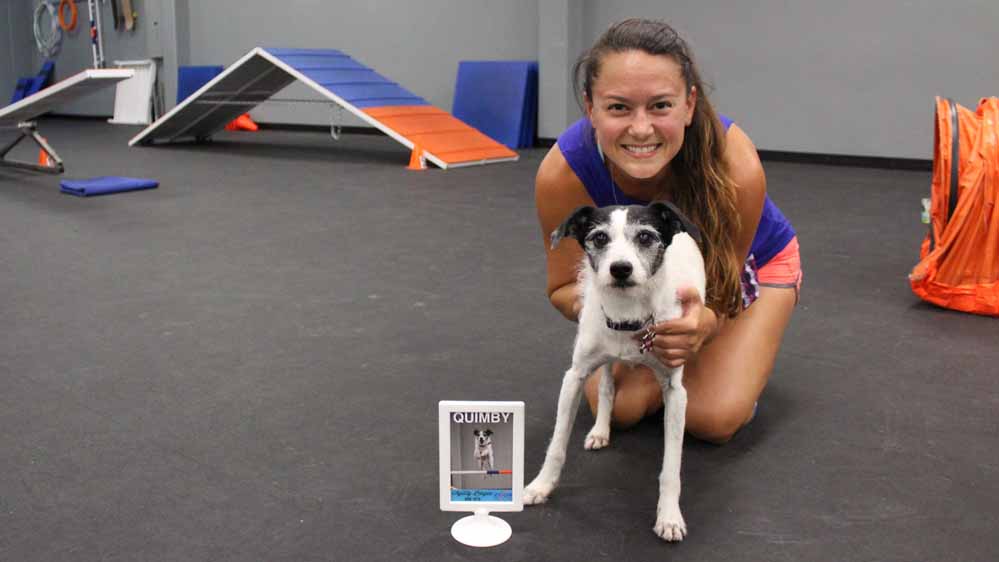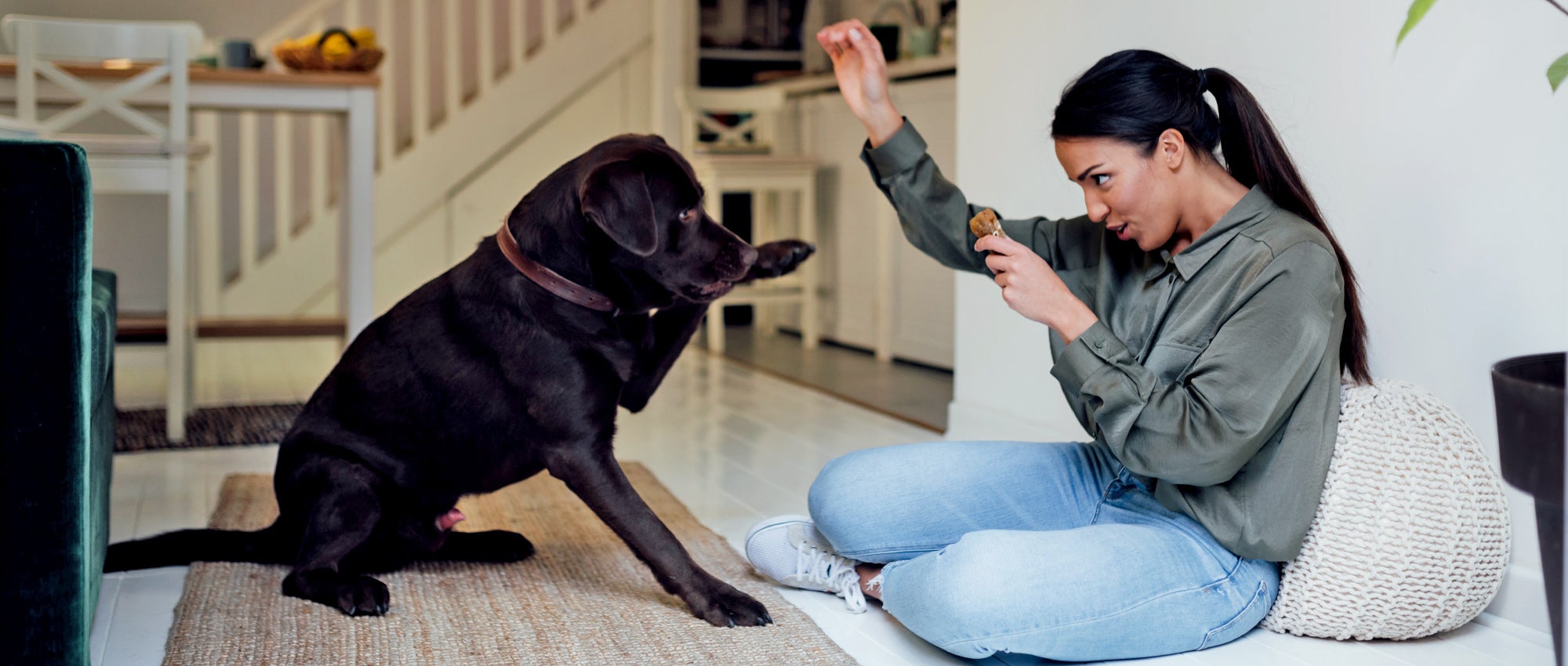Explore the Different Types of Pet Training Available for Your Furry Good Friend
Comprehending the different kinds of canine training is important for enhancing your canine companion's habits and fostering a stronger bond. From basic obedience to sophisticated techniques such as dexterity and scent job, each training method offers distinct benefits customized to both the canine's and proprietor's needs. Additionally, customized programs resolve particular demands, such as those for service or therapy pets. As you take into consideration the most effective strategy for your furry friend, it ends up being noticeable that the selection of training can substantially influence your shared experiences and results. What variables should you consider prior to committing to a specific training style?
Basic Obedience Training
Basic obedience training lays the structure for a well-behaved pet dog, setting the phase for a harmonious connection in between pet and proprietor. This essential training focuses on teaching dogs basic commands such as sit, remain, come, down, and heel. These commands not just boost interaction but also advertise safety and security in various environments.
The training process normally starts with favorable support techniques, where rewards such as deals with or appreciation are used when the pet dog successfully complies with a command. This strategy motivates a positive learning atmosphere, eventually cultivating trust in between the owner and the pet dog. Uniformity is vital; regular practice makes sure that the pet preserves commands gradually.
Additionally, standard obedience training aids to resolve common behavioral issues, such as jumping, barking, or pulling on the leash. By establishing clear boundaries and assumptions, proprietors can reduce undesirable actions and enhance their canine's socialization skills.

Advanced Training Strategies
Advanced training techniques build upon the fundamental skills established in fundamental obedience training, supplying a pathway to improve a pet's capacities and responsiveness. These techniques usually involve specialized commands and skills, enabling pet dogs to execute tasks that require greater levels of concentration and knowledge.
One prominent approach is dexterity training, where pets navigate challenge training courses, boosting their physical coordination and mental sharpness. This not only supplies exercise but also enhances the bond between pet and trainer through team effort and interaction.
One more innovative strategy is scent job, which take advantage of a dog's natural olfactory abilities. This training urges pets to identify and locate particular fragrances, boosting their emphasis and analytical skills. Such activities can be especially beneficial for breeds inclined to monitoring.
Service canine training is another critical location, where pet dogs find out to help individuals with disabilities. This training needs a high degree of obedience and specialized skills customized to the particular needs of their handlers.
Behavior Alteration Techniques
Efficient pet dog training extends past instructing commands and abilities; it also incorporates habits modification approaches that resolve unfavorable actions. These techniques are important for correcting problems such as aggression, extreme barking, and splitting up anxiety, making certain a harmonious connection in between pet dogs and their proprietors.
One commonly recognized method is favorable reinforcement, which involves gratifying preferred actions to motivate their reoccurrence. This approach is effective in strengthening great behaviors while decreasing anxiety official site or anxiety in the pet dog. Alternatively, aversive techniques, such as penalty or unfavorable support, are typically prevented by professionals because of their possible to develop fear and stress and anxiety, resulting in additional behavior issues.
One more vital approach is desensitization, which gradually exposes pets to the stimuli that prompt undesirable habits in a controlled way. This procedure aids pets discover to remain calm and composed in scenarios that would typically activate stress and anxiety or aggressiveness.
Counter-conditioning is commonly made use of together with desensitization, where the canine learns to connect favorable experiences with formerly adverse stimulations. Both strategies need perseverance and uniformity, making them efficient tools for attaining durable behavior modification. By utilizing these behavior modification methods, pet owners can promote a well-adjusted and delighted canine buddy.
Specialized Training Programs
In the world of pet dog training, specialized training programs accommodate particular requirements and objectives, providing customized methods that improve a canine's abilities and address one-of-a-kind obstacles. These programs are designed for different objectives, including service pet training, treatment pet dog preparation, and also this hyperlink competitive sports training.
Service pet training focuses on furnishing pet dogs with the skills necessary to aid individuals with handicaps, such as guiding aesthetically impaired proprietors or notifying to clinical emergencies. This training is rigorous and typically needs a mix of obedience, socializing, and details task-oriented abilities.
Treatment dog programs aim to prepare pets for psychological assistance roles in medical facilities, colleges, and assisted living home. These pets must display calmness, sociability, and a mild demeanor, ensuring they can offer convenience to those in distress.
In addition, competitive sports training, such as agility or obedience trials, highlights fitness, accuracy, and team effort in between the canine and trainer. These programs demand a high degree of commitment and method, promoting a solid bond while developing the pet dog's athletic capabilities.
Enjoyable and Interactive Training Activities
Just how can pet dog training be both enjoyable and efficient? The answer lies in including fun and interactive training tasks that boost your pet dog's mind while reinforcing important skills. Involving your canine via play not just reinforces the bond between you and your hairy good friend however additionally improves their learning experience.
One effective way to achieve this is via agility training, where pets navigate barrier training courses that challenge their psychological and physical capacities. This task urges analytic and boosts control, making it an view website outstanding option for active breeds. An additional option is using puzzle playthings that dispense treats, which can maintain your pet emotionally inspired and engaged to discover.
Furthermore, integrating games like fetch or hide-and-seek can make training sessions more dynamic. These activities encourage the dog to react to commands in a fun context, advertising obedience while permitting for social communication.

Final Thought
In final thought, different types of pet training are important for improving canine habits and fostering a strong human-animal bond. Checking out these diverse training choices gears up canine owners with the tools necessary to grow well-shaped, happy, and obedient friends.
Recognizing the various kinds of pet training is crucial for boosting your canine buddy's actions and cultivating a more powerful bond. From fundamental obedience to sophisticated strategies such as dexterity and fragrance job, each training technique uses special benefits customized to both the pet dog's and owner's needs.Basic obedience training lays the structure for a well-behaved canine, setting the phase for a harmonious relationship between family pet and owner.The training procedure usually starts with positive support methods, where rewards such as treats or praise are offered when the pet effectively adheres to a command.In verdict, different kinds of pet dog training are important for enhancing canine behavior and promoting a strong human-animal bond.
Comments on “Puppy Training Made Easy: Vital Tips for Raising a Mannerly Pup”